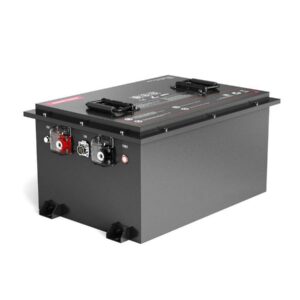
Why do heavy duty trucks have 2 batteries?
Heavy-duty trucks use dual battery systems to meet high power demands for engine cranking, auxiliary systems, and reliability. Two 12V lead-acid batteries wired in parallel provide doubled cold cranking amps (CCA) for diesel engines in extreme temperatures while maintaining 12V compatibility. This setup also ensures redundancy—if one battery fails, the other can still start the engine. Pro Tip: Always replace both batteries simultaneously to prevent voltage imbalance and sulfation.
What Is the Best Battery for a Diesel Pickup Truck?
Why do diesel trucks need higher cranking power?
Diesel engines require 2–3× more starting torque than gasoline engines due to higher compression ratios (18:1 vs. 10:1). Dual batteries deliver 1,800–2,200 CCA collectively, ensuring reliable ignition at -30°C. A single battery would struggle, risking incomplete combustion cycles. For example, a Cummins X15 needs 1,900 CCA minimum—achievable only with paired batteries. Pro Tip: Use AGM batteries for vibration resistance in off-road conditions.

How do dual batteries prevent electrical system failure?
Redundancy is critical in commercial trucks. If one battery develops a dead cell or connection fault, the second maintains essential functions like ECU power and emergency braking. In sleeper cabs, dual batteries also power HVAC and appliances without draining the starter battery. Real-world analogy: It’s like having a backup generator for hospital life-support systems.
What’s the difference between parallel vs. series configurations?
Heavy trucks use parallel wiring to keep voltage at 12V while doubling capacity. Series connections (24V total) are rare except in military vehicles. See key contrasts:
| Configuration | Voltage | Capacity |
|---|---|---|
| Parallel | 12V | 200Ah |
| Series | 24V | 100Ah |
Pro Tip: Use identical cable lengths for both batteries to balance current flow.
Are Duracell Car Batteries a Good Choice for Your Vehicle?
How do temperature extremes affect dual-battery setups?
Cold thickens engine oil and increases electrolyte resistance, requiring 30% more CCA. Dual batteries compensate by distributing the load. In heat above 40°C, batteries self-discharge 15% faster—two units share the depletion stress. Real-world example: Canadian truckers often add battery warmers to maintain -40°C performance.
Can lithium-ion replace lead-acid in truck dual systems?
Yes, but with trade-offs. Lithium LiFePO4 batteries offer 50% weight savings and 3× cycle life but cost 4× more upfront. They also require specialized 14.6V charging systems. See comparison:
| Metric | Lead-Acid | LiFePO4 |
|---|---|---|
| Cost | $200 | $800 |
| Weight | 60 lbs | 31 lbs |
Pro Tip: Lithium excels in electric refrigeration fleets due to deeper 80% DoD tolerance.
Battery Expert Insight
FAQs
How often should truck batteries be replaced?
Every 3–4 years or when CCA drops below 75% of rated capacity. Test biannually in extreme climates.
Can I add a third battery for more accessories?
Yes, but use a dedicated deep-cycle battery with an isolator to prevent starter drain. Upgrade alternators accordingly.
